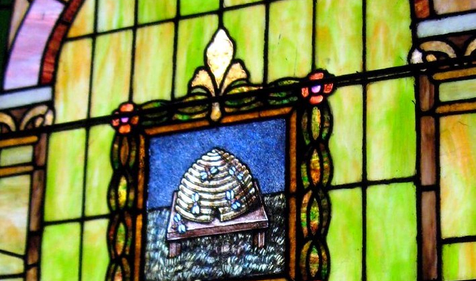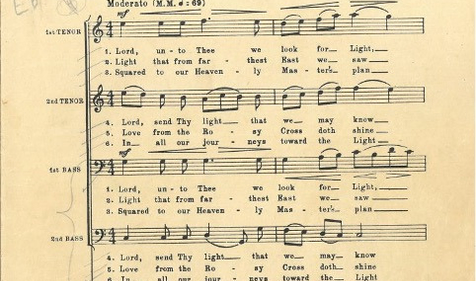Discover how the Masonic working tools embody essential teachings and virtues of Freemasonry, guiding moral and spiritual growth.
The rituals of Freemasonry are built upon ethical and philosophical teachings that guide us in our lifelong journey toward self-improvement. To become a Master Mason, a man must complete three degrees, ceremonies that use ancient symbols to equip a Brother with the knowledge necessary to build himself into a man of integrity. Many of these symbols derive from the traditional trade of stonemasonry. Today in Freemasonry, they are known as the working tools.
The degrees are structured by ranks of the stonemasons’ guild, which regulated the profession. As a stonemason grew in his craft, he achieved the ranks of apprentice, journeyman, and master mason. These ranks are now reflected in the three Blue Lodge degrees, with the apprentice now being called the Entered Apprentice degree and the journeyman now being called the Fellow Craft degree.
Through Freemasonry’s degrees, a man is entrusted with the secrets of each level and the art of using the tools to build his moral character. As he completes each Masonic degree, he learns more about Freemasonry, including how to apply the lessons of these symbols to everyday life.
Below, we dive into the history of Masonic working tools and how their meanings are interpreted by Freemasons today.
Common Gavel
The first step to becoming a Freemason is completing the first degree, Entered Apprentice. An Entered Apprentice lacks the knowledge of an expert craftsman but is introduced to the tools that will help him achieve his full potential. During this degree, he is handed a common gavel, which has a gable on one end and a flat surface on the other.
Stonemasons used the gavel to break off the rough parts of a stone and shape it. It is a foundational symbol of the Craft, for with the common gavel, a Freemason begins removing his imperfections and prepares to build himself into a man of integrity.
In Brother Oliver Street’s book Symbolism of the Three Degrees, published by the Masonic Service Association of the United States in 1924, he wrote of this emblem:
“[The common gavel] is not adapted to giving polish or ornamentation to the stone, and hence it should symbolize only that training of the new Freemason which is designed to give some limited skill and moral training.”
To put it simply, the gavel represents self-improvement, ridding yourself of vices and chipping away at your Rough Ashlar on your journey towards light.
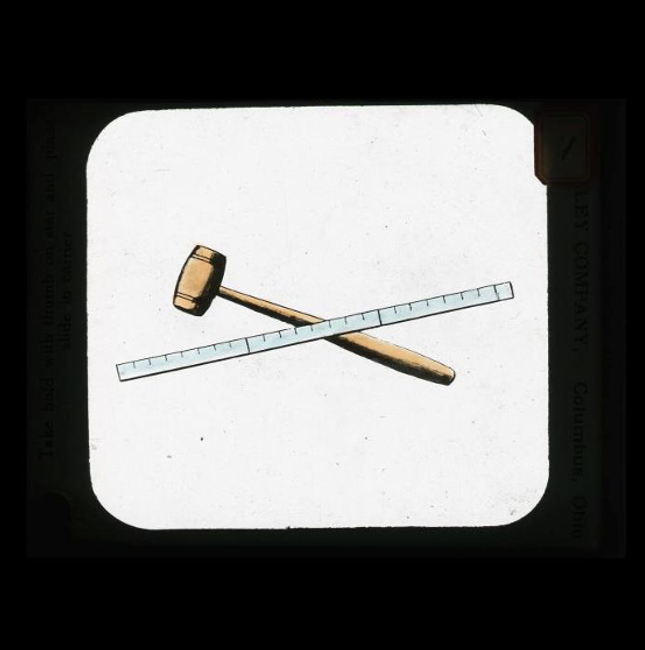
24-Inch Gauge
Another working tool introduced during the first degree is the 24-inch gauge. This instrument is often depicted with three sections, each measuring 8 inches and symbolizing the 24 hours of a day. The symbolism of the 24-inch gauge underscores the importance of balance and moderation in a Freemason’s life. Of the 24-inch gauge, Brother Street wrote:
“The Twenty-four Inch Gauge typifies time well spent. It teaches us the value of our time, that time wasted can never be regained, that it is a priceless commodity, that there is a time for all things, a time for labor, a time for rest, a time for amusement, a time for worship, and a time for the relief of distress.”
To take the interpretations of the twenty-four-inch gauge literally and split our time entirely between our duty to God, labor, and refreshment, would cause us to exclude much from our life. Instead, the lesson here is for Freemasons to find balance in their Masonic duties, professional responsibilities, and personal life. This can only come through discipline and self-control and builds upon the lessons illustrated by the common gavel.
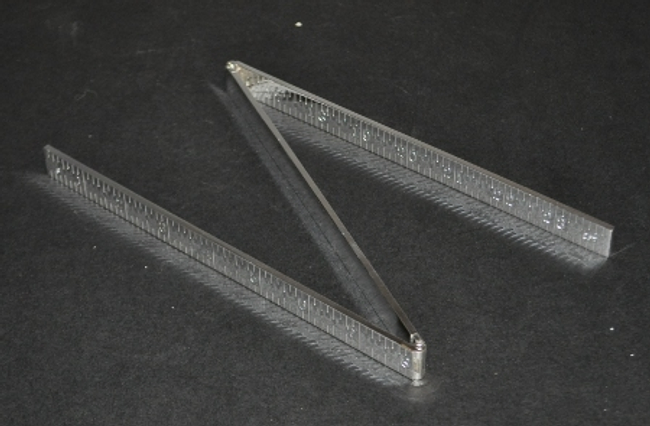
The Plumb, Level, and Square
By the time a Brother has completed the second degree and becomes a Fellow Craft, he has demonstrated his proficiency in the teachings of the fraternity. He is further along in improving his Rough Ashlar and has proven ready to wield more advanced working tools and, as a result, is introduced to many new symbols, including the plumb, level, and square.
The next symbol, the level, represents the virtue of equality, and the essential belief in Freemasonry that all Masons, no matter their religion, race, or economic class, are equal. In stonemasonry, a level is a tool with a straight edge that is used to determine whether a surface is perfectly horizontal or flat. In Freemasonry, the level reminds our members of the importance of treating all individuals with respect, dignity, and fairness and of the need to work together in harmony and unity towards common goals.
Furthermore, it illustrates that no Brother may skip steps and be raised to a higher degree until he masters the teaching of his station. Brother Street also wrote of this symbol:
“Masonry, by its systems of degrees, from one of which the candidate cannot, at least theoretically, be advanced to a higher degree until by his own efforts he has mentally and morally fitted himself for the next degree, teaches a lesson that only by proficiency and efficiency does any man become entitled to advancement among his fellowmen.”
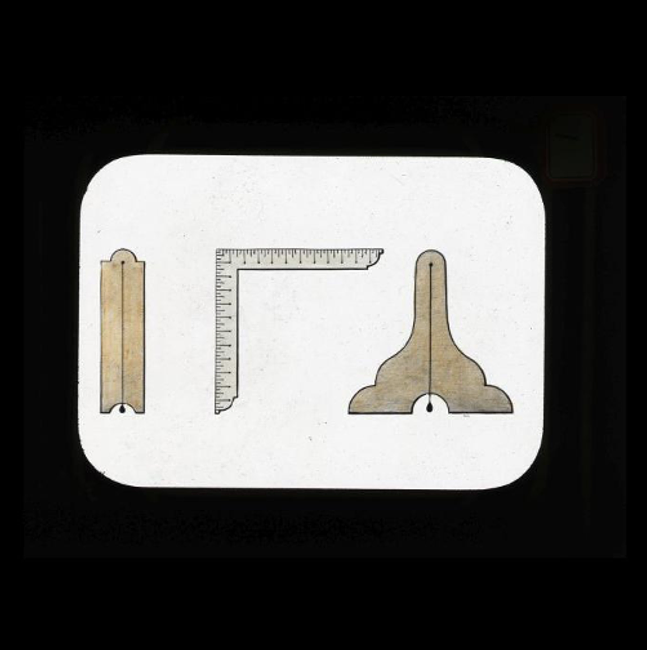
Next, we explore the significance of the plumb in Masonic ritual, a tool that is the vertical equivalent of a level. The tool itself is made from wood or metal with a string and weight attached and is used to ensure that structures stand straight.
In the archives of The Scottish Rite Masonic Museum & Library there is a Masonic monitor published in 1861 that highlights the importance of the plumb in Freemasonry:
“The Plumb admonishes us to walk uprightly in our several stations before God and man, squaring our actions by the Square of our virtue, and remembering that we are traveling upon the Level of time, to that undiscovered country, from whose bourn [i.e., destination] no traveler returns.”
As Freemasons, we strive to be upright in thought and deed. The plumb reminds us of this virtue and that we must always remain straight and true in our dealings with others while the square, the third of these instruments used by architects, represents the promise of living an honest life.
The square, or builder’s square, is made of two equal flat-edged metal or wooden arms fixed that form a perfect “right angle” – or 90-degree angle. This tool is critical in stonemasonry because it allows craftsmen to draw and carve perfect square corners which are necessary to ensure the structural integrity of an edifice. In Masonic ritual, the square represents morality and introduces the concept of being “square” in your actions, a term that today is known beyond the fraternity as an implication of honesty and fairness. Malcolm C. Duncan's Masonic Ritual and Monitor reads, “I now receive you on the angle of the square, which is to teach you that the square of virtue should be the rule and guide of your conscience in all future transactions with mankind.”
The lesson here is that by regulating our conduct and following what we may know as “the golden rule” we can live in brotherly love with all mankind.
The Trowel
To become a Master Mason, and a full-fledged member of the Craft, a Brother must complete the third degree and demonstrate he can use all the working tools of his craft to fulfill the plans of the Divine Architect. But first, he must learn to use the final tool: the trowel. An ancient craftsman’s tool, trowels have been used to erect buildings since time immemorial. This tool is used to smooth out freshly placed concrete so builders can precisely and carefully secure stone in place.
It is appropriate then that the trowel is a foundational symbol of the Master Mason. Cement binds all the parts of the building into one common mass, and, accordingly, Freemasons are taught in the third degree to spread the cement of affection and kindness.
In Symbolical Masonry, by H.L. Haywood, the author wrote, “If the stone represents an individual man, and if the Temple represents the Fraternity as a whole, it is evident that the Trowel is the symbol of that which has the power to bind men together.”
As full members of the fraternity, Master Masons are taught to use the trowel to spread Brotherly Love and unite all Masons. There is to be no animosity, and instead, we should lean into kindness and harmony, no matter who our Brothers are or where they come from. It is through this lesson that we have come to have a global Brotherhood that has maintained its traditions across the centuries.
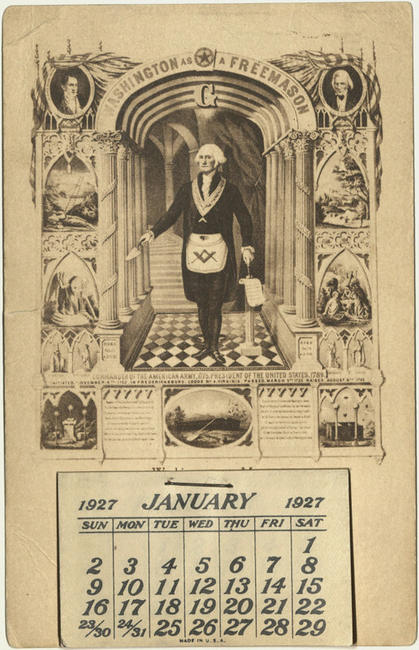
Perfecting Our Ashlar
Every Freemason understands that Masonic working tools are not mere artifacts from the past but living symbols rich with ethical and moral teachings. Each tool, from the common gavel to the trowel, offers lessons that extend far beyond the craft of stonemasonry, shaping the character and actions of every Freemason. They guide us in our daily lives and by mastering these tools, we not only contribute to our personal growth but also to the betterment of society. Indeed, the working tools of Freemasonry remain as relevant today as they were in the time of ancient guilds, serving as cornerstones in the edifice of our Masonic journey.
Related Stories
Discover additional Scottish Rite blogs and news on this topic.
-
A Jolly Masonic Mug
History
Read More about A Jolly Masonic Mug
-
What Does the Beehive Mean in Freemasonry?
Degrees
Read More about What Does the Beehive Mean in Freemasonry?
-
Official (and Unofficial) Music for the 32nd Degree
History
Read More about Official (and Unofficial) Music for the 32nd Degree


